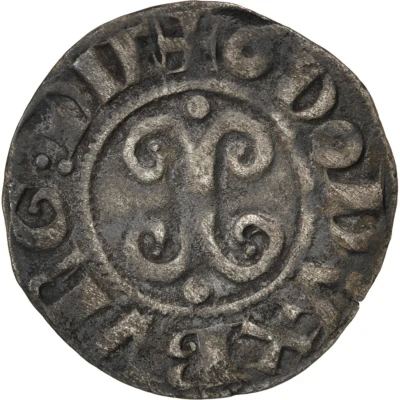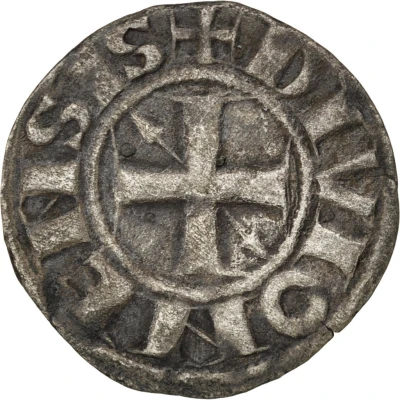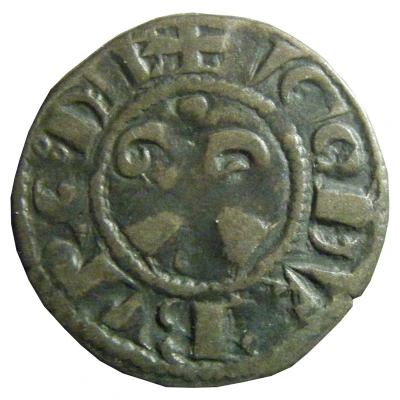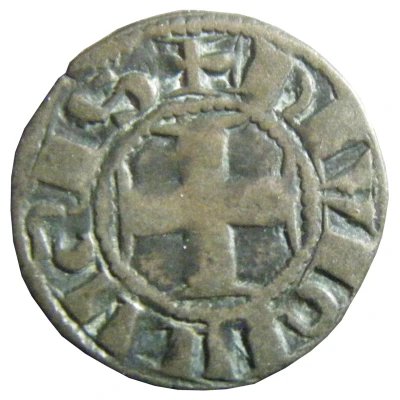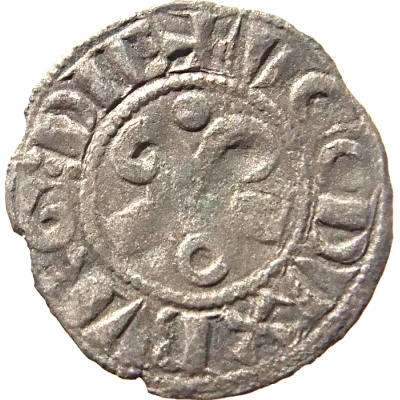
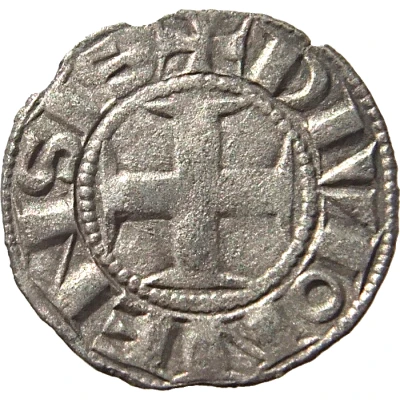

© Charles Travaillant
Denier - Hugh III Dijon; S prograd ND
| Billon (.335 silver) | 0.86 g | 19 mm |
| Issuer | Duchy of Burgundy (French States) |
|---|---|
| Duke | Hugues III (1162-1192) |
| Type | Standard circulation coin |
| Years | 1162-1192 |
| Value | 1 Denier (1⁄240) |
| Currency | Livre |
| Composition | Billon (.335 silver) |
| Weight | 0.86 g |
| Diameter | 19 mm |
| Shape | Round (irregular) |
| Technique | Hammered |
| Orientation | Variable alignment ↺ |
| Demonetized | Yes |
| Updated | 2024-10-04 |
| Numista | N#107304 |
|---|---|
| Rarity index | 91% |
Reverse
Cross.
Script: Latin
Lettering: ☩ DIVIONENSIS
Translation: [Denier] of Dijon.
Comment
This coin type comprises two variants, differentiated by the shape of the first S on the reverse, which was used to differentiate two successive productions with different titles and end weights: coins with two S's on the reverse (Barthélémy 2/15, Dumas-Dubourg 6-1) and those with the first S on the reverse (Barthélémy 2/14, Dumas-Dubourg 6-2). Each of these two variants in turn comprises several varieties.All these coins were first attributed to Hugues V, i.e. to the 14th century (1305-1315). The Druy-Parigny find (Large) enabled Maxe-Werly to restore them to Hugues III, a classification that has since been confirmed by several finds, including those made in the Orient, and also by the presence of a worn denarius in the Courcelles-Frémoy find.
Hugues III's upright S coins are earlier than their inverted S counterparts. Their modulus is larger (19 mm) and their titer higher, as is their end weight. Numerous examples of denarii in this category have been discovered in the Orient among other coins.
Among the coins bearing two upright S's on the reverse, we can distinguish :
- those with a round O on the right and reverse, and three dots superimposed between BVRG and DIE (Dumas-Dubourg 6-1-1).
- those with a round O on the right and reverse, and three overlapping rings between BVRG and DIE (Dumas-Dubourg 6-1-2).
- those with a long 0 on the right, a round O on the reverse, and three overlapping rings between BVRG and DIE (D-D 6-1-3).
Interesting fact
One interesting fact about this coin is that it was minted during the reign of Hugh III, who was the Duke of Burgundy from 1162 to 1192. During his rule, he implemented a number of reforms, including the creation of a new currency system, which led to the minting of this coin. The coin's design features an image of Hugh III on one side and a cross on the other, symbolizing the duke's authority and the Christian faith. Additionally, the use of billon, a silver-copper alloy, was a common practice during this time period, as it was more durable than pure silver and helped to prevent counterfeiting.
